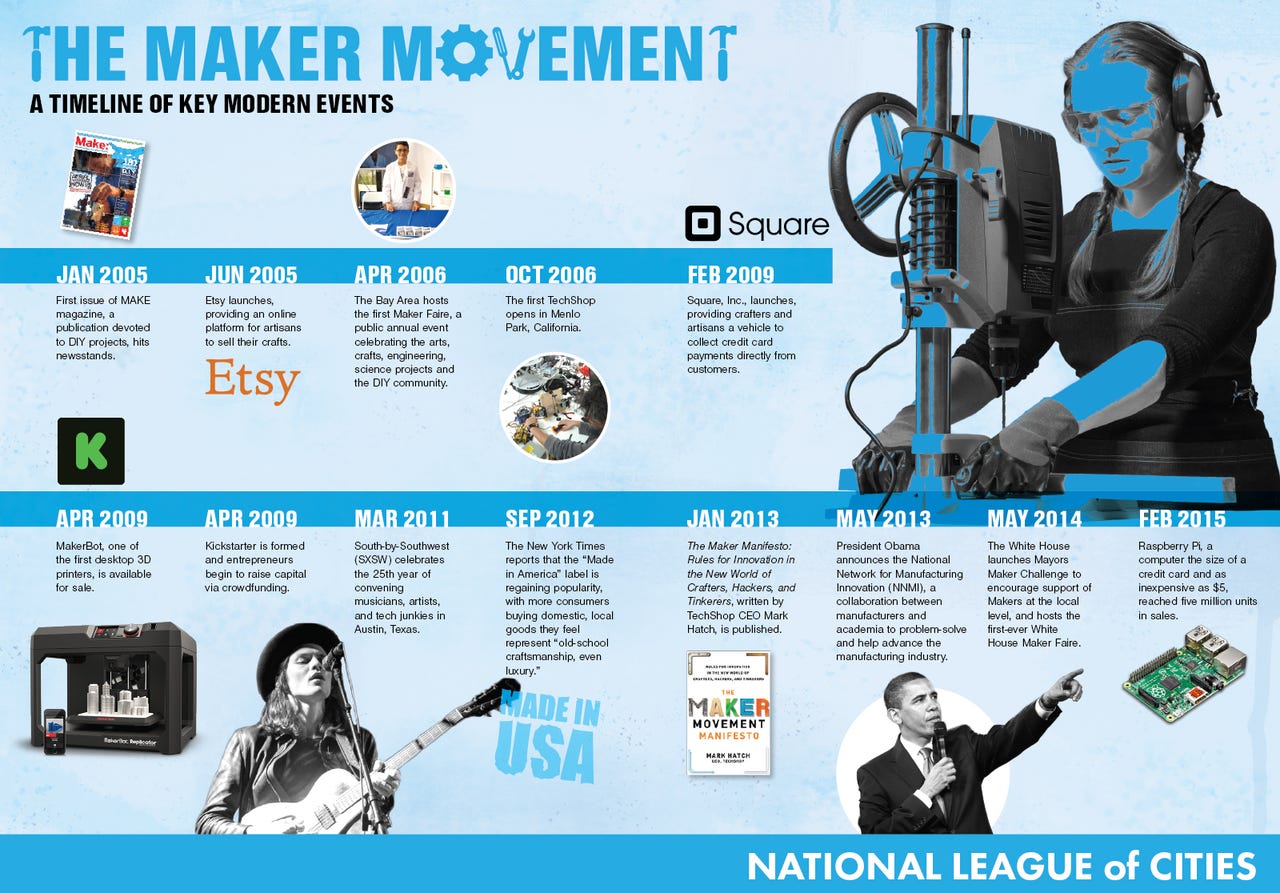A nation of Makers? Not so much.


Exactly how widespread is the maker movement? It's probably not as prolific as you think, according to a new report from the National League of Cities.
"Only 26 percent of American cities are engaging in the maker movement, which is shown to have a positive economic impact in cities," Explains Clarence E. Anthony, CEO and executive director of NLC, an organization in the dedicated to helping city leaders build better communities.
The so-called movement has been described lots of ways: an empowering shift in the way technology is created and consumed, a democratic uprising, an economic boom, just another hobby culture ...
The rosiest view is that the maker movement comprises an ethos and a political and economic awakening. A 2013 report from MakerMedia and Deloitte embodies that perspective and has served as something of a treatise for the most philosophically-minded members of the maker community:
"It's about developing agency, starting with the physical world, through the use of platforms and technology that make it easier to connect, learn and collaborate. We believe that the Maker Movement itself has the potential to change the world in some interesting ways that get us toward being more sustainable and thriving. Imagine if we extend the Maker ethos -- of tinkering and experimenting, of building platforms for collaboration and communities for learning, of acting upon the most vexing problem in our daily lives -- into our cities."
But the new findings from the National League of Cities, which was supported by research from American University, suggests that while the maker movement is potentially transformative, penetration has been limited.
That's in contrast to other widely circulating reports. According to Atmel Corporation, a manufacturer of microcontrollers and a major supplier for the maker movement, there are an estimated 135 million U.S. adults who are makers. That number seems preposterously high to me unless we're stretching the definition of "a maker" until it becomes too broad to be meaningful.
Indeed, part of the problem with an organic groundswell of technology users and creators is that it's difficult to measure or track. Absent some of kind census, the best we can do is look at peripheral indicators.
One way is to look at the economics of sectors associated with makers. In 2013, Wired magazine reported that the overall market for 3D printing products and similar maker services reached $2.2 billion in 2012, a compounded annual growth rate of almost 29 percent when compared to the $1.7 billion the industry recorded in 2011. Projections are expected to reach $6 billion by 2017 and reach $8.4 billion by 2020.
It's also enlightening to look at how cities that have embraced the maker movement seem to be benefiting. One bright spot is Pittsburgh. Drawing on the prowess of the robotics engineering programs found at the University of Pittsburgh and Carnegie Melon, companies like Google and TechShop have set up outposts in Pittsburgh's developing urban core. The city has become one of the most encouraging spots for innovation in the United States, according to Popular Mechanics magazine. The publication even awarded Mayor Bill Peduto the title "Maker Mayor."
The result in Pittsburgh has been visible. Revenue from growth translates into protected bike lanes, open spaces, parks, and events.
The National League of Cities chose to focus on makerspaces, which are often hosted in libraries, schools, co-working spaces, or storefronts. Makerspaces are designed to consolidate technology used by makers--such as CAD software and 3D printers--in order to broaden access.
"Through makerspaces, cities can incentivize economic growth and entrepreneurialism," said Brooks Rainwater, senior executive and director, National League of Cities' Center for City Solutions. "This report provides cities with tangible ways to innovate and take advantage of the ever-growing sharing economy. Cities that have designated spaces for prototyping, manufacturing, innovation and collaboration have seen economic growth and more competitive workforces."